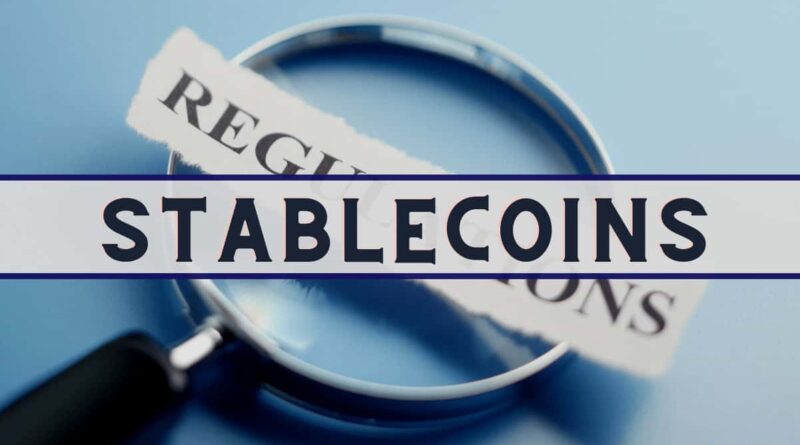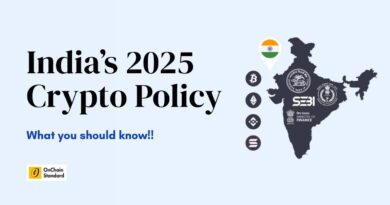Stablecoin Regulation Around the World: 2025 Overview
Explore 2025 stablecoin regulations worldwide, from EU’s MiCA to U.S.’s GENIUS Act. Learn how Tether, USDC, and DeFi navigate compliance, driving $250 billion in market cap and $8.5 trillion in transactions.
Introduction
Stablecoins, digital assets pegged to fiat currencies or other assets to maintain price stability, have surged in adoption, with a global market cap exceeding $250 billion in 2025. Their role in cross-border payments, decentralized finance (DeFi), and bridging traditional finance has prompted regulators worldwide to establish frameworks addressing risks like financial stability, money laundering, and consumer protection. This article provides a comprehensive overview of stablecoin regulations in key jurisdictions in 2025, highlighting trends, challenges, and implications for the crypto ecosystem.
Global Stablecoin Landscape in 2025
Stablecoins facilitate over $8.5 trillion in annual transactions, surpassing traditional payment networks like Visa in volume. Tether (USDT) leads with a $141.4 billion market cap, followed by Circle’s USDC at ~$50 billion. The rise of enterprise adoption (e.g., PayPal’s PYUSD, Stripe’s integration) and real-world use cases in emerging markets (e.g., Argentina, Nigeria) underscores their transformative potential. However, regulatory scrutiny has intensified due to risks like de-pegging, illicit use, and systemic impact, driving diverse approaches globally.
Stablecoin Regulations by Region
- United States
The U.S. has made significant strides toward stablecoin regulation in 2025, though a federal framework is still evolving.
- GENIUS Act: Passed by the Senate in June 2025, the Guiding and Establishing National Innovation for U.S. Stablecoins Act establishes a federal framework for stablecoin issuers, requiring licensing by the Office of the Comptroller of the Currency (OCC) or state regulators, full reserve backing (primarily U.S. Treasuries), and Anti-Money Laundering (AML) compliance. It bans yield-bearing stablecoins and restricts large tech firms from issuing.
- STABLE Act: Pending in the House, the Stablecoin Transparency and Accountability for a Better Ledger Economy Act shares similar goals but designates joint oversight by federal regulators and imposes stricter consumer protections. A key difference is a two-year moratorium on algorithmic stablecoins.
- Challenges: The “Tether loophole” in both bills fails to regulate offshore issuers like Tether, which dominates with 80% of transactions occurring outside the U.S. Critics argue the bills lack FDIC insurance or refund mechanisms, risking consumer losses.
- State-Level Regulation: Wyoming’s Stable Token Act (2023) mandates 100–102% liquid reserves for its WYST, launching mid-2025. New York’s BitLicense requires full reserves and monthly audits for USD-backed stablecoins.
- Outlook: President Trump’s Executive Order (January 2025) emphasizes stablecoins to strengthen dollar dominance, with a report due by July 2025 recommending new laws. Banks are exploring stablecoin issuance (e.g., JPM Coin, USDF Consortium), signaling mainstream integration.
- European Union
The EU leads with a comprehensive framework under the Markets in Crypto-Assets Regulation (MiCA), fully effective in January 2025.
- MiCA Rules: Classifies stablecoins as Asset-Referenced Tokens (ARTs) or E-Money Tokens (EMTs), requiring issuers to hold full reserves, undergo regular audits, and comply with AML/KYC. Non-compliant stablecoins (e.g., USDT) were delisted by exchanges like Coinbase and Kraken by January 2025.
- Impact: MiCA’s strict reserve and transparency requirements have set a global standard, with EURI (a MiCA-compliant stablecoin) enabling cross-border payments and tokenized platforms. Crypto-asset service providers (CASPs) face a transitional period until July 2026 to obtain full MiCA licenses.
- Challenges: The ban on interest-bearing stablecoins limits DeFi yield generation, and enforcement varies across member states, delaying investor protections.
- Outlook: MiCA’s success has prompted jurisdictions like Hong Kong and Singapore to align their frameworks, reinforcing the EU’s regulatory influence.
- United Kingdom
The UK’s stablecoin regulation remains underdeveloped but is gaining traction.
- FCA and BoE Efforts: The Financial Conduct Authority (FCA) began shaping rules in February 2024, focusing on fiat-backed stablecoins for payments. A 2024 discussion paper proposes full reserve backing and redemption requirements, with legislation expected in 2025.
- Challenges: Vague deadlines and lack of clarity have frustrated investors and businesses. The FCA’s 2024 roadmap prioritizes consumer protection but lacks specific timelines.
- Outlook: The UK Treasury aims to define stablecoins in law, potentially allowing overseas stablecoins for retail payments. Collaboration with the Bank of England explores systemic integration, but progress lags behind the EU.
- Asia-Pacific
Asia’s financial hubs are leading with progressive yet stringent stablecoin frameworks.
- Singapore: The Monetary Authority of Singapore (MAS) treats stablecoins as digital payment tokens, requiring issuers to register, maintain full reserves in local banks, and conduct regular audits. Singapore’s tokenized bond projects and retail adoption drive stablecoin use.
- Hong Kong: New crypto rules effective August 2025 require licenses, bank-held reserves, and audit reports. Regulatory sandboxes foster innovation while ensuring compliance.
- Japan: The Financial Services Agency mandates yen-backed reserves and audits, supporting local token development. Japan’s stablecoin market is smaller but growing in retail use.
- South Korea: The Digital Asset Basic Act (proposed June 2025) legalizes KRW-pegged stablecoins with a minimum capital of ₩50 million and FSC approval, easing earlier restrictive proposals.
- Challenges: China’s ban on stablecoin transactions limits regional growth, while India’s restrictive policies hinder adoption. Illicit use of USDT in East and Southeast Asia remains a concern.
- Outlook: Asia’s focus on retail and cross-border payments positions it as a stablecoin adoption leader, with Singapore and Hong Kong setting benchmarks.
- Middle East
The Middle East is emerging as a stablecoin hub, particularly in the UAE.
- UAE: The Abu Dhabi Global Market accepts USDT and other stablecoins as virtual assets. The Dubai Financial Services Authority approved stablecoins in 2024, fostering regulated growth.
- Outlook: Circle’s expansion with EURC and Tether’s dominance highlight the region’s potential, though regulatory harmonization is needed.
- Latin America
Latin America leads in real-world stablecoin use due to economic instability.
- Key Drivers: 71% of regional firms use stablecoins for cross-border payments, leveraging low fees and speed. Argentina, Nigeria, and Turkey show high adoption due to inflation.
- Regulation: Brazil and Mexico are developing frameworks, but enforcement lags. Lack of regional coordination creates compliance challenges.
- Outlook: Stablecoins are critical for remittances and e-commerce, with 92% of Latin American firms reporting infrastructure readiness.
Global Regulatory Trends
Several themes define stablecoin regulation in 2025:
- Reserve Requirements: Most jurisdictions mandate 100% reserve backing with liquid assets (e.g., cash, Treasuries), audited regularly to ensure stability.
- AML/KYC Compliance: The Financial Action Task Force’s (FATF) Travel Rule is widely adopted, requiring customer identification and transaction monitoring.
- Transparency: Issuers must disclose reserve holdings and undergo independent audits, with standardized reporting emerging as a norm.
- Interoperability: G20 initiatives and IMF guidance promote cross-border data sharing and regulatory alignment to reduce gaps.
- Consumer Protection: Frameworks emphasize timely redemption and safeguards against de-pegging, though enforcement varies.
- Innovation vs. Stability: Jurisdictions like Singapore balance innovation (e.g., sandboxes) with risk controls, while others (e.g., China) prioritize restrictions.
Challenges and Risks
- Patchwork Regulation: Inconsistent frameworks create friction for cross-border payments, increasing costs for users.
- Illicit Activity: Stablecoins like USDT are used in organized crime, prompting stricter AML measures.
- Compliance Costs: Issuers face $10 million annually in audit and reporting expenses, potentially stifling smaller players.
- Offshore Issuers: Non-regulated issuers like Tether undermine frameworks, as seen in the U.S. “Tether loophole.”
- De-Pegging Risks: Historical failures (e.g., TerraLuna’s $45 billion collapse) highlight the need for robust stabilization mechanisms.
Future Outlook for Stablecoin Regulation
In 2025, stablecoin regulations are set to evolve:
- U.S. Leadership: Passage of the STABLE Act could position the U.S. as a global leader, driving demand for Treasuries and reinforcing dollar dominance.
- Global Standards: The G20’s 2025 payments roadmap may establish international stablecoin standards, reducing regulatory arbitrage.
- Market Growth: Global transactions are projected to grow 70%, with a market cap reaching $400 billion, driven by retail and institutional adoption.
- Bank Integration: Banks like JPMorgan and consortia like USDF are issuing stablecoins, blurring lines between TradFi and DeFi.
- Emerging Markets: Stablecoins will continue to thrive in regions with volatile currencies, supported by regulatory clarity.
Conclusion
Stablecoin regulation in 2025 reflects a global effort to balance innovation with financial stability. The EU’s MiCA, U.S.’s GENIUS Act, and Asia’s progressive frameworks demonstrate diverse approaches to managing risks while fostering adoption. Challenges like inconsistent rules and offshore issuers persist, but trends toward transparency, AML compliance, and interoperability signal a maturing market. As stablecoins reshape payments and DeFi, staying informed on regulatory developments is crucial for investors, businesses, and policymakers navigating this dynamic landscape.




